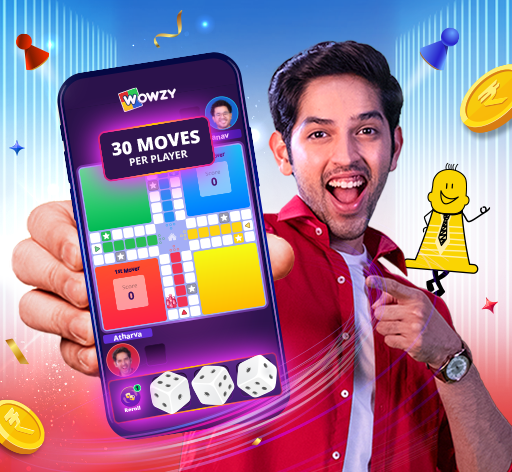In the world of board games, few elements are as simultaneously simple yet mathematically complex as the humble dice roll. At Wowzy Ludo, where strategic gameplay meets probabilistic thinking, understanding the mathematical underpinnings of dice rolls can transform you from a casual player into a calculated strategist. This article explores the fascinating intersection of probability and decision-making in Wowzy’s innovative three-dice Ludo system, revealing how mathematical awareness can significantly enhance your gameplay.
The Revolutionary Three-Dice System: A Probability Game-Changer
Traditional Ludo relies on a single six-sided die, creating a straightforward probability distribution where each number has a 1/6 (approximately 16.67%) chance of appearing. Wowzy’s innovative three-dice system, however, introduces a fascinating layer of complexity and strategic depth:
- Three dice are rolled simultaneously at the beginning of each turn
- The first player selects one die from the three options
- The second player chooses from the remaining two dice
- The first player uses the final remaining die
- In subsequent turns, player selection order alternates
This system fundamentally transforms Ludo from a game heavily influenced by chance to one dominated by strategic choice and probability management. Let’s explore the mathematical implications of this system.
Understanding the Probability Distribution
When three dice are rolled simultaneously, the probability landscape becomes significantly more nuanced than with a single die:
The First Selection Advantage
For the player selecting first, the probability distribution looks remarkably different from traditional Ludo:
- Probability of at least one 6 appearing: 42.1%
- Probability of at least one 5 or 6: 70.4%
- Probability of having three different numbers: 55.6%
This creates a substantial first-selection advantage, particularly when needing specific high values for strategic moves such as token activation or reaching home spaces.
The Second Selection Reality
For the player selecting second, probabilities shift based on the first player’s choice:
- If the first player takes a 6, the probability of another 6 being available drops to 30.6%
- If the first player takes a low value (1-3), the probability of a high value (4-6) being available increases to 69.4%
- The second player must constantly recalculate probabilities based on the first player’s selection
The Final Die Acceptance
The player receiving the final die faces a completely deterministic situation—no probability calculation required, but rather a strategic assessment of how to best utilize whatever value remains.
Strategic Applications of Probability in Wowzy Ludo
Understanding these probability distributions enables several powerful strategic approaches:
1. Value Optimization Strategy
When selecting first, the optimal strategy often involves taking the highest value die, but probability awareness reveals exceptions:
- If you need a specific value to reach a safe zone, the probability of that specific value appearing is approximately 42.1% across three dice
- When deciding between a guaranteed moderate value (e.g., 4) versus gambling on better options in subsequent turns, calculate the expected value of each approach
- Consider the probability of your opponent needing specific values when making your selection
2. Defensive Probability Tactics
Probability awareness allows for effective defensive play:
- If your opponent has a token four spaces from home, selecting a 4 (when available) denies them the exact value needed
- The probability of your opponent having a token exactly capturable by a specific die value decreases as more tokens enter play
- Calculate the probability of your opponent being able to capture your vulnerable tokens based on remaining dice values
3. The Expected Value Approach
Advanced players calculate the expected value (EV) of each potential move:
EV = (Probability of Outcome A × Value of Outcome A) + (Probability of Outcome B × Value of Outcome B) + …
For example, when deciding whether to advance a token near home versus one in a vulnerable position:
- Calculate the points gained from advancing the near-home token
- Calculate the probability of the vulnerable token being captured and the associated point loss
- Compare these values to make the mathematically optimal decision
Probability Variations Across Game Phases
The relevance of different probability calculations evolves throughout Wowzy’s 30-move game structure:
Early Game (Moves 1-10)
In the opening phase:
- The probability of getting tokens into play quickly increases with multiple dice options
- Calculate the probability of establishing multiple tokens on the board within the first few turns
- Early token distribution creates compounding advantages through increased future options
Mid-Game (Moves 11-20)
As the game progresses:
- Probability calculations should focus on capture opportunities and safe zone positioning
- The likelihood of strategic token advancement increases with more options on the board
- Calculate the probability of reaching critical board positions before your opponent
Late Game (Moves 21-30)
In the final phase:
- Probability calculations focus on getting tokens home and maximizing final scoring
- The exact-value requirement for home entry makes probability calculations particularly crucial
- Calculate the likelihood of getting required values in the remaining moves
Practical Probability Tools for Wowzy Players
To apply probability concepts effectively during gameplay, consider these practical approaches:
The Rule of Complementary Probability
When calculating the probability of at least one favorable outcome across multiple dice:
- Calculate the probability of not getting what you want on a single die (e.g., not rolling a 6 = 5/6)
- Raise this to the power of the number of dice (e.g., with three dice: (5/6)³ ≈ 0.579)
- Subtract from 1 to find the probability of at least one success (e.g., 1 – 0.579 = 0.421 or 42.1%)
The Quick Probability Estimation Method
For rapid in-game calculations:
- For high values (5-6): Approximately 33% chance per die, or 70% across three dice
- For mid values (3-4): Approximately 33% chance per die, or 70% across three dice
- For low values (1-2): Approximately 33% chance per die, or 70% across three dice
- For exact values: Approximately 17% chance per die, or 42% across three dice
The Expected Points Calculation
To optimize point accumulation:
- Estimate points gained from each potential move
- Multiply by the probability of success for each scenario
- Choose the option with the highest expected point value
Psychological Aspects of Probability in Wowzy Ludo
Beyond pure mathematics, probability in Ludo has fascinating psychological dimensions:
Probability Misperception
Many players systematically misperceive probabilities in predictable ways:
- Overestimating the likelihood of rare events (like rolling three 6s)
- Underestimating the value of consistent moderate gains
- Falling prey to the gambler’s fallacy (believing past rolls influence future ones)
Understanding these common biases allows you to make more rational decisions while potentially exploiting opponents’ misperceptions.
Risk Tolerance and Probability
Players’ risk tolerance significantly impacts how they interpret and act on probabilities:
- Risk-averse players often overvalue safe moves even when expected value calculations suggest aggressive play
- Risk-seeking players may undervalue the probability of negative outcomes
- Adapting your strategy to your opponent’s risk profile creates additional advantages
Comparative Probability: Traditional vs. Wowzy Ludo
The shift from traditional single-die Ludo to Wowzy’s three-dice system creates fascinating probability contrasts:
| Scenario | Traditional Ludo | Wowzy Ludo |
| Probability of rolling a 6 | 16.7% | 42.1% (at least one 6 in three dice) |
| Probability of exact value needed for home | 16.7% | 42.1% (first selector), 30.6% (second selector), or 16.7% (final die) |
| Player control over outcome | Low (pure chance) | High (strategic selection from options) |
| Probability of consecutive high rolls | Low (each roll independent) | Can be strategically manipulated through selection |
| Probability of getting tokens into play quickly | Low (requires 6) | High (multiple dice options) |
This probability transformation is what makes Wowzy Ludo significantly more skill-based than traditional versions, despite still incorporating the element of chance through dice rolls.
Practical Tips for Probability-Based Play
To leverage probability knowledge in your Wowzy Ludo games:
- Calculate Three-Dice Probabilities: Familiarize yourself with the likelihood of specific values appearing across three dice
- Think in Expected Values: For each potential move, multiply the outcome value by its probability
- Consider Selection Order: Adjust your strategy based on whether you’re selecting first or second
- Track Opponent Needs: Calculate the probability of your opponent getting values they critically need
- Balance Risk and Reward: Use probability calculations to find the optimal balance between aggressive and conservative play
Conclusion: Probability as Your Competitive Edge
In Wowzy Ludo’s skill-based format, probability understanding isn’t just helpful—it’s essential for high-level play. While novice players see dice rolls as pure luck, masters recognize them as a complex probability landscape to be navigated strategically.
The three-dice system transforms Ludo from a game where players are at the mercy of random chance to one where they actively manage probability distributions to their advantage. By understanding the mathematical underpinnings of dice rolls, calculating expected values, and making decisions based on sound probability principles, you gain a significant competitive edge.
Remember that in Wowzy Ludo, luck isn’t something that simply happens to you—it’s a resource to be managed through intelligent probability-based decision making. The next time you face those three dice, you won’t just be hoping for favorable numbers; you’ll be calculating your path to victory through the fascinating mathematics of probability.
As you develop your probability-based strategy, you’ll discover that what initially seemed like simple dice selection transforms into a sophisticated mathematical art form that elevates your Ludo gameplay from casual entertainment to masterful competition. Your opponents may attribute your success to luck, but you’ll know the truth: in Wowzy Ludo, understanding probability creates its own luck.
Also Read:
The Importance of Token Prioritization in Wowzy Ludo
Your Ultimate Guide to Mastering Ludo Safe Zones in an Online Game


